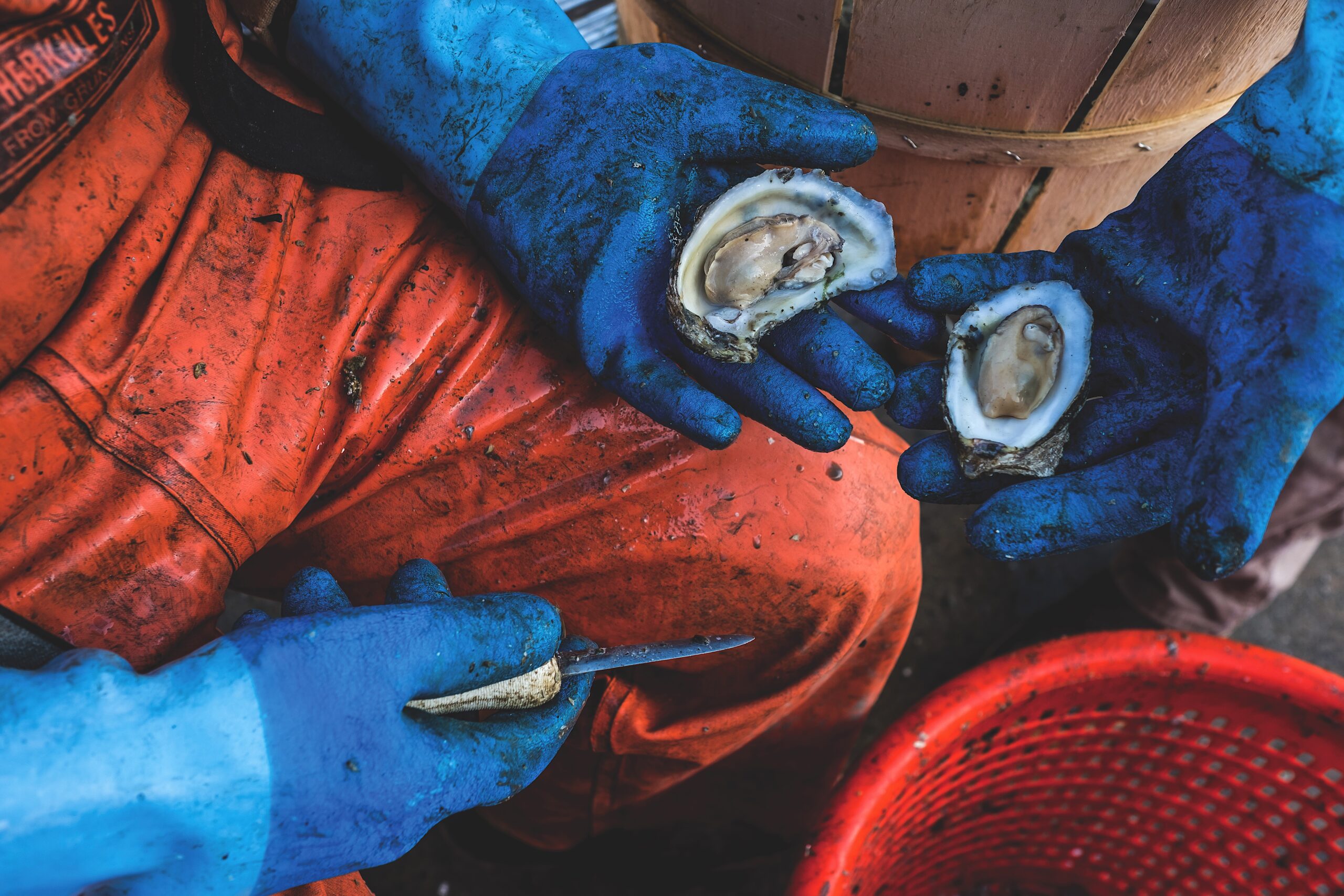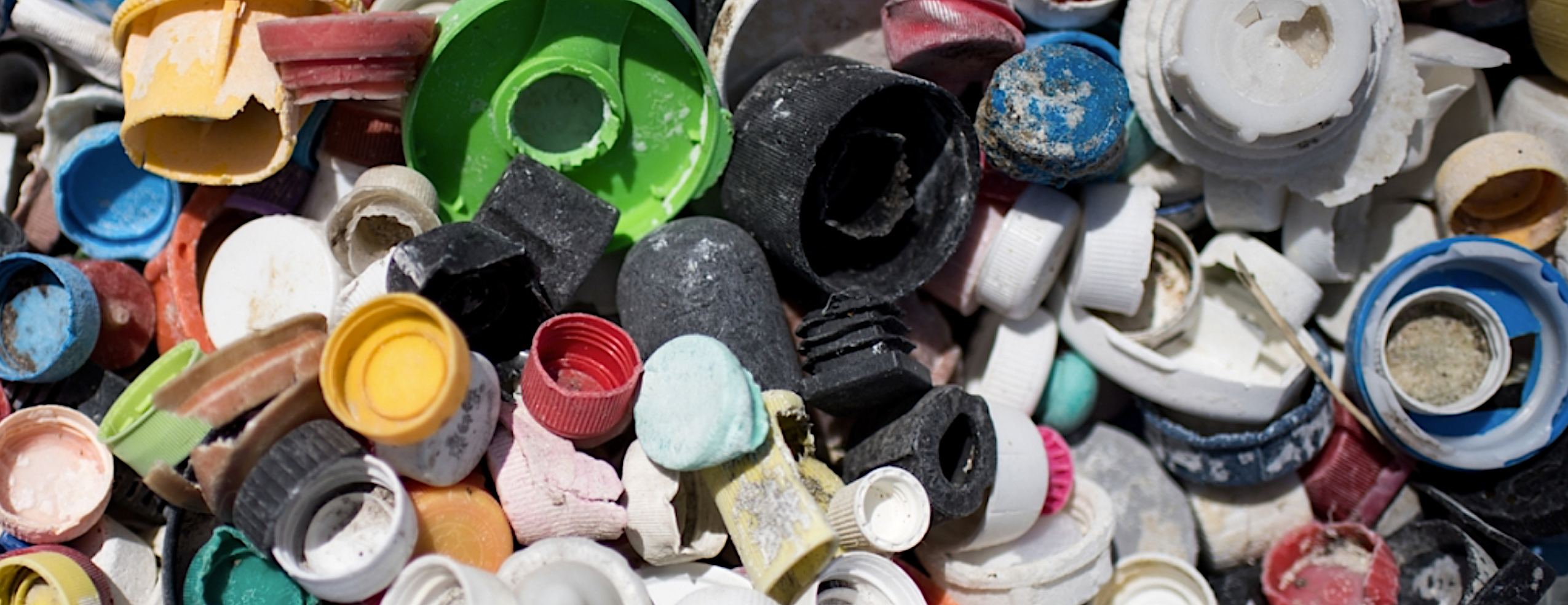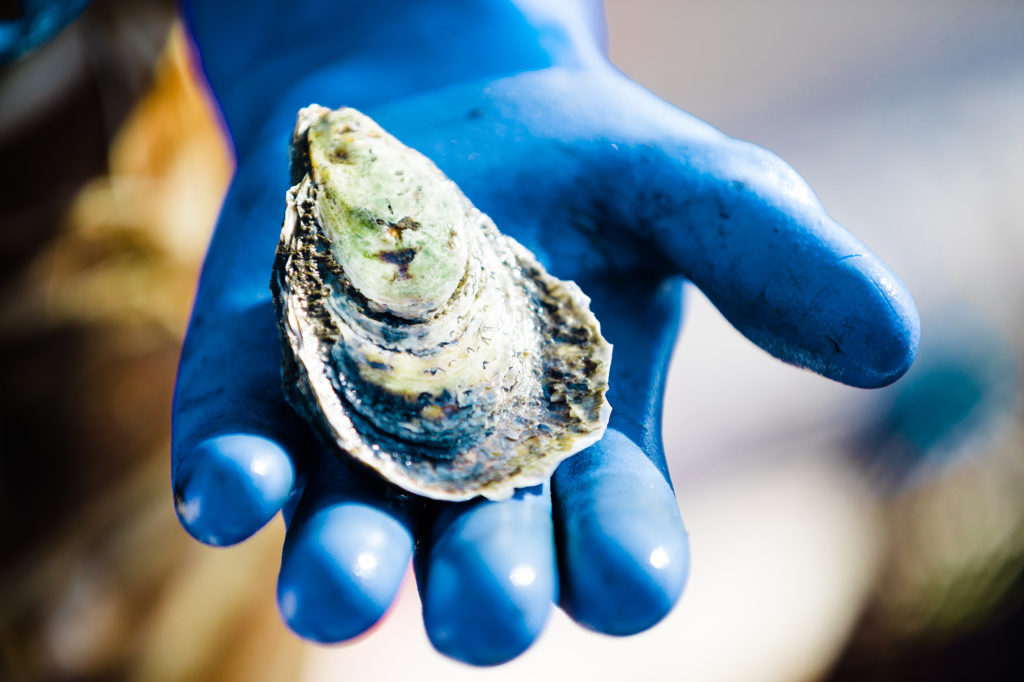
“Our goal is to provide scientific data in context that can aid decision-making and dispel misinformation.”
University of North Carolina Wilmington’s Stephen Skrabal and Brooks Avery are assessing metals and microplastic contamination in oysters for a new North Carolina Sea Grant research project.
Beyond their economic impacts, oysters are important “ecosystem engineers,” says Stephen Skrabal, from UNCW’s Department of Chemistry and Biochemistry. A single adult oyster, in fact, can filter up to 50 gallons of water a day, which improves water quality. Clustered oysters create reefs that provide habitat and food for other marine organisms and act as natural breakwaters, attenuating wave energy to combat flooding and erosion.
To Skrabal, oysters also serve as important “environmental sentinels,” reflecting the quality of their ecosystems.
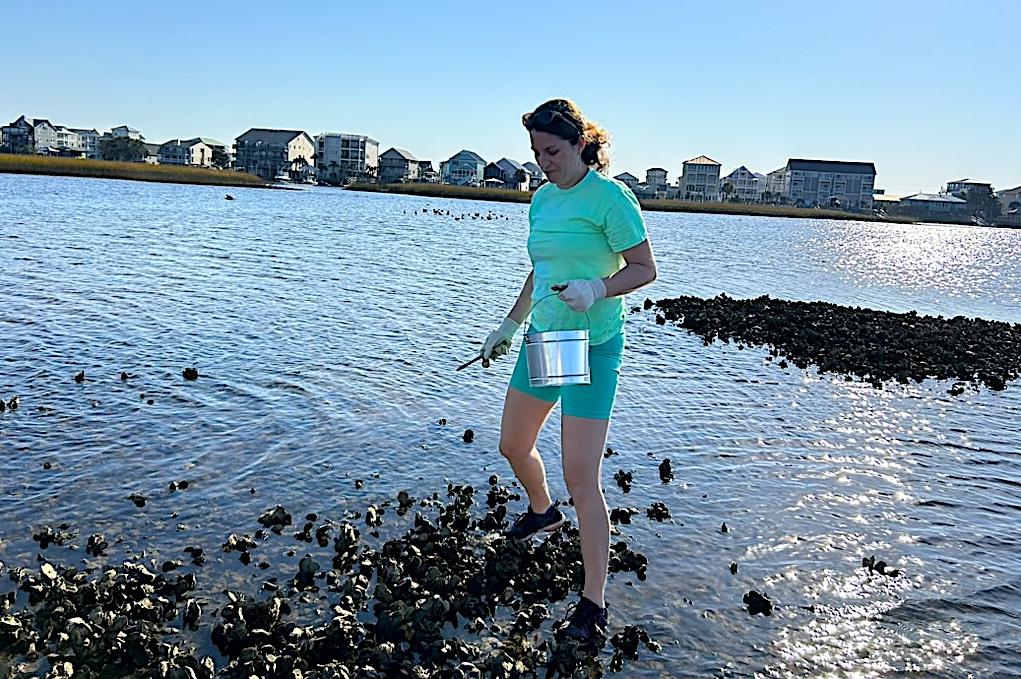
Like other aquatic species, oysters are susceptible to contamination from runoff, pollution, and erosion. In turn, heavy metals and microplastics (“small plastic pieces less than five millimeters long”) can build up in oyster tissues, affecting oyster health and posing potential health hazards for consumers.
“But seafood consumption advisories don’t account for potential heavy metal or microplastic contamination,” Skrabal says.
NOAA’s National Mussel Watch Program has been monitoring oysters and mussels for elevated levels of microplastics and metals for decades nationwide. However, Skrabal and Avery want to test these bivalves specifically in North Carolina, because the state is a hub for oyster harvesting and reef formation. In addition, increasing urbanization and marine activity in cities like Wilmington also increase the potential risk of contamination for oysters.
Prior research also suggests such contamination warrants a closer look in North Carolina. With regard to microplastics, for instance, a recent study by North Carolina Sea Grant and NC State University found that the Neuse River Basin alone “annually delivers an estimated 230 billion particles of plastic to the Pamlico Sound.”
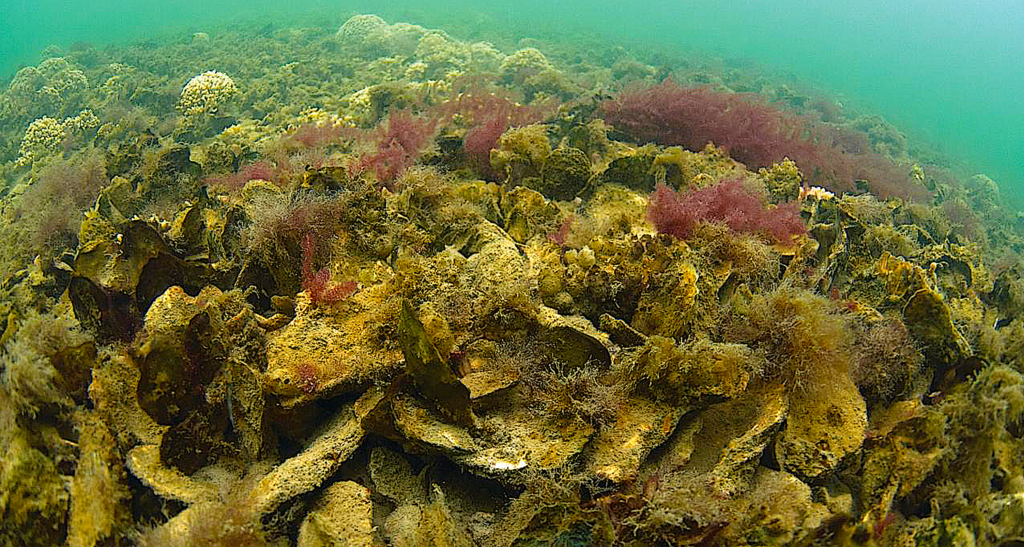
Skrabal and Avery are teaming up with Barbara Beckingham, an environmental geoscientist at the College of Charleston, to test for microplastic content in oysters. Beckingham, who has previously conducted research on microplastic concentrations in South Carolina oysters, will work with Skrabal and Avery to compare data between the two states, exploring the types of risks posed to oysters, their environments, and shellfish consumers.
Their project also will sample oysters from commercial oyster farms to measure concentrations of metals like copper, zinc, and arsenic.
“The presence of something alone doesn’t make it inherently harmful,” Skrabal says. “Our goal is to provide scientific data in context that can aid decision-making and dispel misinformation.”
A decade ago, Skrabal and Ralph Mead, an organic geochemist at UNCW, sampled oysters in New Hanover and Brunswick counties. Their research uncovered arsenic levels in these oysters that were among the highest in the country, along with higher-than-average levels of copper and zinc, all of which can affect the health of consumers, as well as the oysters’ surrounding environment.
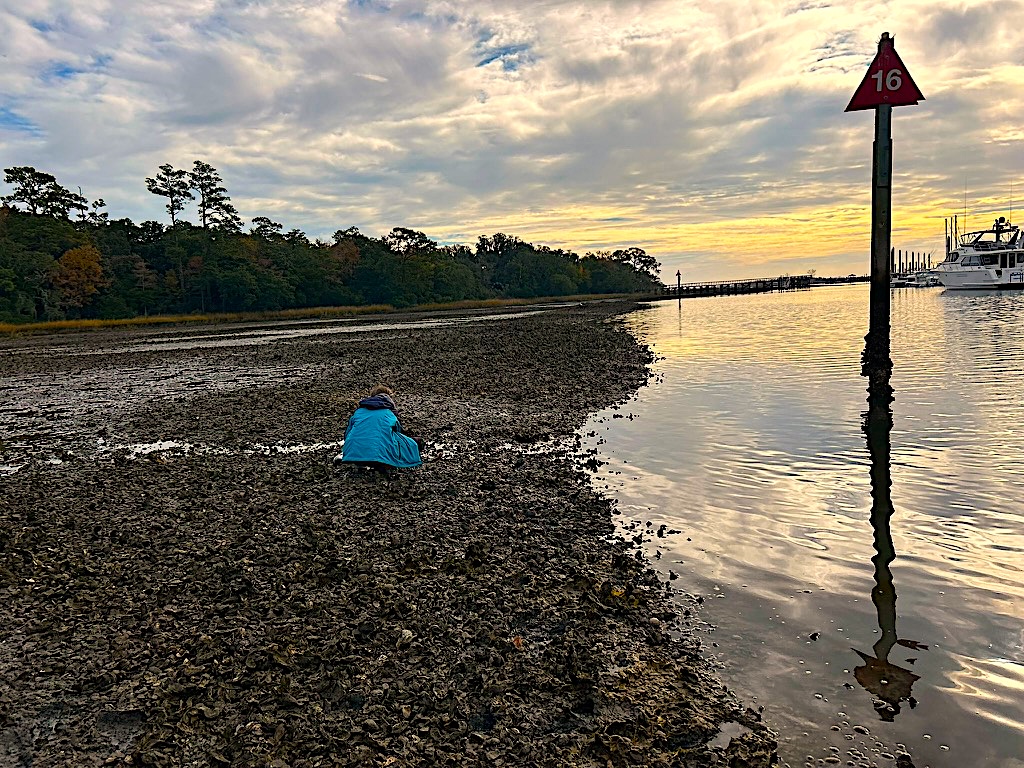
Skrabal emphasizes that humans and oysters alike need these trace metals in low concentrations for nutrients, but at high levels, they can present problems. For example, copper is an important mineral that supports regulated biological processes.
“Oysters can be good sources of copper,” he says, “but the levels are elevated in marinas because of the anti-fouling paints.” And increased copper levels can negatively affect organisms’ growth, reproduction, and other functions.
Skrabal and Avery’s team began sampling oysters from growers in October at about 20 sites in tidal creeks, narrow channels that ocean tides shape. The particular tidal creeks that supply these sites also serve as an interface between urban areas.
“Information is power,” Skrabal says. “It’s a driving force behind our project.”
More
“What’s So Special About NC Oysters? Savoring the NC Oyster Trail”
“Shrinking Habitats: How Have Oyster Reefs Changed Over the Last Six Decades?”
NC Sea Grant’s research funding
Find numerous oyster recipes from North Carolina Sea Grant’s award-winning Mariner’s Menu.
Carrie Clower is a contributing editor for Coastwatch and a science communicator for North Carolina Sea Grant. She holds an M.A. in communication studies from The University of Alabama.
- Categories:

